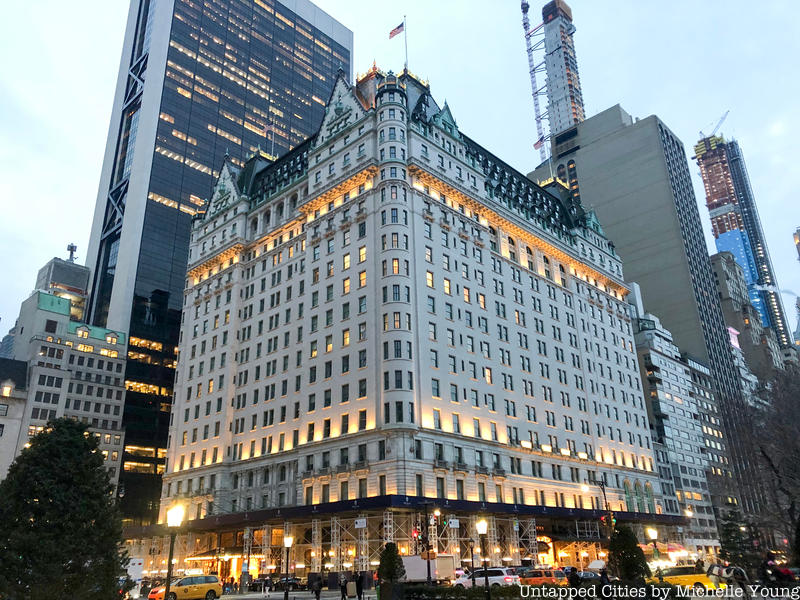
At the corner of Central Park sits a French Chateau. At least, that’s what the original developers of New York City’s Plaza Hotel, Bernhard Beinecke, hotelier Fred Sterry, and Harry S. Black, President of the Fuller Construction Company, intended when they spent $12 million building a 19-story ‘skyscraper’ hotel near the Grand Army Plaza in Manhattan. The Plaza Hotel, the only hotel in the city to be named a National Historic Landmark, opened in 1907. Papers hailed it at the time as the greatest hotel in the world. It was certainly the most luxurious, boasting its breathtaking glass-ceilinged Palm Court, its 1,650 crystal chandeliers, and its gold-encrusted china, the largest order from L. Straus & Sons in history.
The Plaza Hotel is one of the oldest and most famous buildings in the city, now over a hundred years old. For decades, it was the meeting place of Manhattan’s wealthiest socialites, and still remains, in some part, today. Most interesting to us though in its 100 year history are some of its most eye-catching secrets. Here’s what we dug up:
1. The Plaza for Which the Hotel Is Named Commemorates Civil War Soldiers, A Newspaper Publisher, And a Roman Goddess
The ‘Plaza’ in ‘Plaza Hotel’ stands for the Grand Army Plaza, right on the southeasternmost corner of Central Park. For the small square that it is, it is the site of a few interesting memorials. Most recognizable is the golden statue of William Tecumseh Sherman, the harsh, unforgiving Civil War general whose methodical destruction of the land his army passed over helped win the North a decisive victory. His horse is led by the personification of Victory. The statue is gilded in real 23 karat gold.
Also at the Plaza is the Pulitzer Fountain, contributed by publisher Joseph Pulitzer for the designs laid out by sculptor Karl Bitter, who proposed a Beaux-Arts style square in 1898. Atop the fountain is Pomona, a Roman Goddess of fruitful abundance. The site was named the Grand Army Plaza after the Grand Army of the Potomac in the Civil War.





